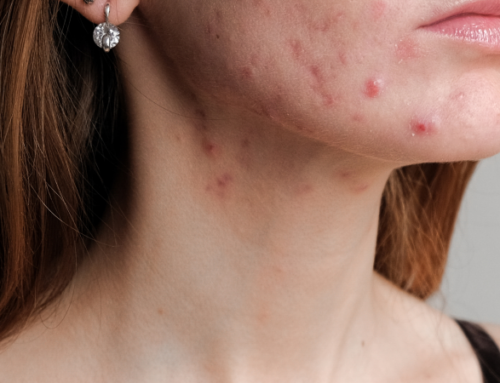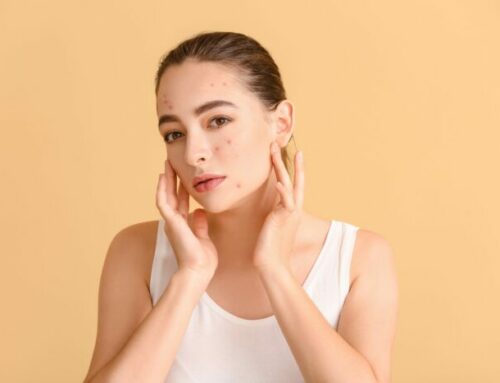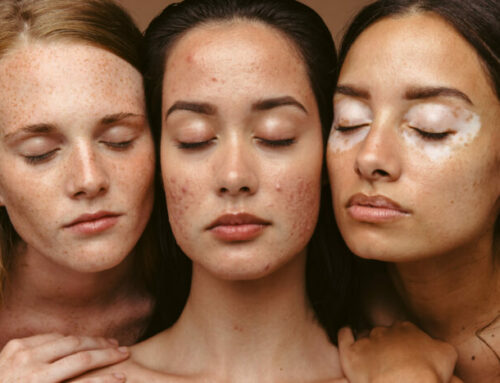Do you find yourself blushing or flushing more easily than others, especially on your nose and cheeks? This redness can be Rosacea, a chronic facial skin condition affecting more than 16 million Americans. April is designated as Rosacea Awareness Month by the National Rosacea Society (NRS) to educate the public about this condition and to encourage individuals suspecting rosacea to seek diagnosis, treatment, and skincare guidance from a dermatologist.
What is Rosacea?
Rosacea typically appears as redness in the nose and cheeks but may gradually spread to the forehead, chin, ears, chest, and back. Its severity ranges from mild flushing to persistent redness with visible blood vessels. Additionally, some individuals may experience bumps and pimples, often mistaken for acne.
Causes of Rosacea
While the exact cause of rosacea remains unknown, researchers speculate that a combination of genetic, environmental, and vascular factors may be involved. Triggers such as sun exposure, spicy foods, alcohol, hot beverages, and stress can exacerbate symptoms. Abnormalities in the immune system and the presence of microscopic mites called Demodex folliculorum on the skin might also contribute to its development.
Symptoms of Rosacea
- Rosacea symptoms vary among individuals and may include:
- Facial Redness: Persistent redness resembling a sunburn or blush.
- Visible Blood Vessels: Small, visible blood vessels (telangiectasia) on the face.
- Bumps and Pimples: Painless, acne-like papules and pus-filled pustules.
- Eye Irritation: Rosacea can affect the eyes, causing redness, dryness, and irritation (ocular rosacea).
- Thickened Skin: In rare cases, rosacea can lead to thickened, bumpy skin on the nose (rhinophyma).
Rosacea Treatment Options
Although there’s no cure for rosacea, various treatments can manage its symptoms and improve skin appearance, including:
- Topical Therapies: Prescription creams and gels containing ingredients like azelaic acid, metronidazole, or sulfur can reduce redness and inflammation.
- Oral Medications: Oral antibiotics like doxycycline or isotretinoin may be prescribed to control inflammation and prevent flare-ups.
- Laser and Light Therapies: Procedures such as intense pulsed light (IPL) therapy or vascular laser therapy target visible blood vessels and reduce redness.
- Skincare Products: Gentle skincare products formulated for sensitive skin can soothe irritation and minimize flare-ups.
Why You Should See a Dermatologist
If you suspect rosacea or struggle to manage its symptoms, consulting a dermatologist is crucial. A dermatologist can:
- Provide a Proper Diagnosis: Rosacea may resemble other skin conditions, necessitating an accurate diagnosis from a qualified healthcare professional.
- Personalize Treatment: Tailor treatment plans based on individual symptoms, triggers, and medical history.
- Monitor Your Condition: Regular follow-up visits allow adjustments to treatment plans and address concerns.
- Offer Support and Education: Provide valuable advice on skincare routines, trigger management, and lifestyle modifications.
Rosacea is a chronic skin condition with a significant impact on quality of life if left untreated. Although there’s no cure, effective management strategies are available. If you suspect rosacea or struggle with its symptoms, scheduling an appointment with a dermatologist can help you take control of your condition and enjoy clearer, healthier skin.






